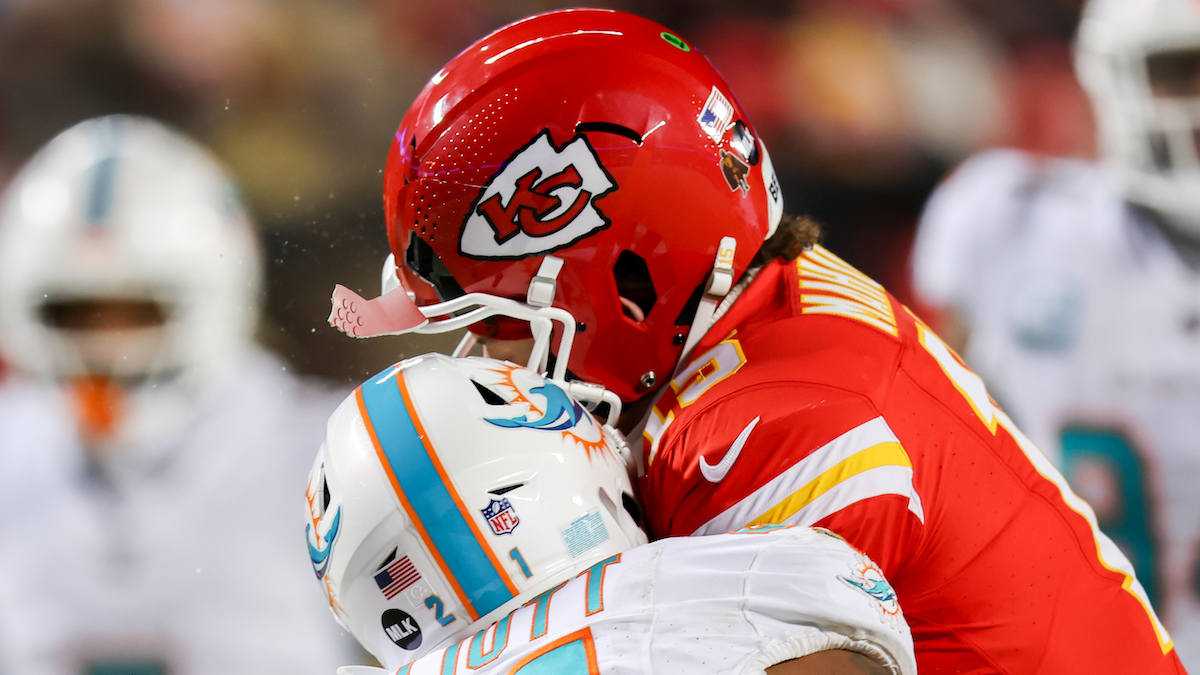Pour one out for the viral Chicago "rat hole."
Friday morning, the viral sensation, which looked to be the imprint of a rat (or squirrel, by some accounts), appeared to have been filled in by a concrete or cement-like material.
Feeling out of the loop? We'll catch you up on the Chicago news you need to know. Sign up for the weekly Chicago Catch-Up newsletter here.
Photos from the scene, in the 1900 block of West Roscoe Street, showed the former rodent-shaped engraving filled in with what appeared to be plaster or concrete. Coins and other trinkets left as part of "rat hole" shrine were strewn about, surrounded by snow and ice.
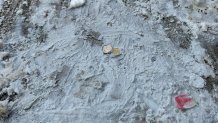
At one point Friday morning, a concerned citizen took to the hole with a make-shift car scraper -- his Illinois license plate -- to try and dig the hole back out, NBC Sports' Alex Shapiro reported from the sidewalk.
"As a Chicagoan, I feel the preservation of history is important," Jonathan Howell said. "It has a plaque, so, you gotta dig it out."
Howell, who lives in Lakeview, added that the cement was "still wet."
"Someone did this," Howell said. "Some vandal did this."
Howell added that he didn't learn of rat hole until recently, despite living in the neighborhood for more than 20 years.
"Just last week, my friend was in town, and he was like 'we have to go see rat hole,'" Howell said.
Others from the neighborhood joined Howell in heroically helping to scrape the rat hole back to its original state, using small tools. However, the icy conditions -- along with the alleged drying cement -- proved difficult.
MORE: Chicago ‘Poop Fountain' interest grows after Chicago ‘rat hole' goes viral
"Who did this?" said Judi Walden as she walked by the covered hole. Walden has lived in the neighborhood since 2005 and was fond of the unique impression in the sidewalk. She was sad to see it filled in.
"That's horrible," Walden said.
Another Chicago citizen added that they had planned to bring the rat hole an offering, and were sad to find it hand been defaced.
"We had bacon we were going to bring," said Meredith Howell. "But we didn't want to litter. And, we'd have bacon in our pockets."
Reese Klemm and Lucy Boemmel, who live in Lakeview were equally shocked after making the pilgrimage from Lakeview.
"I just don't understand why everyone's trying to block our good time," Klemm said. "All I wanted to do was leave a cute little quarter in respect of the rat hole, and now we have to dig it out with a license plate. That's not right. That's not right at all."
Later Friday morning, the residents had succeeded in partially digging back out what had been so brazenly covered up.
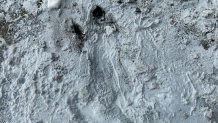
"I'll go to my car, I'll be able to get stuff to carve it out," one neighbor said. Another added that all the scraping had ruined their gloves.
"I'll lend you my gloves," another responded. "It's worth it. It's a noble cause."
The Chicago 'Rat Hole' sees a shrine
Days before, a block of cheese, cigarettes, candles and more were carefully placed on the ground near the impression, which has been engraved into the street for years.
It only recently took on new life, thanks to social media posts.
In the last week, people started setting up makeshift "shrines" at the site, affectionately naming the animal behind the imprint "Chimley."
Riot Fest even placed a dedication plaque at the site, in honor of the beast, thanking it for its "lasting impression."
After that, Benny the Bull visited the famous landmark.
Here are some photos to remember the "rat hole" by:
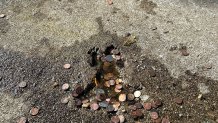
"In memory of Chimley," a sign read, alongside a quote from the rat itself in 1992, which reads "I love cheese."

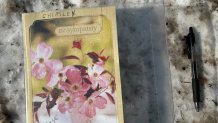

Rat or Squirrel?
Despite the hole's name, the actual animal behind the imprint in the concrete remains up for debate, however.
Lincoln Park Zoo's Dr. Seth Magle, the director of the Urban Wildlife Institute, told NBC Chicago imprint may not be from a rat at all.
In what he jokingly referred to as the "most important scientific finding of maybe our lifetimes," Magle acknowledged the hype around the rat hole has taken over the conversation in Chicago, but the length of the hole "could be basically a big rat or a small squirrel."
There are other signs, however, that lead Magle to believe it was not in fact made by a rat.
"The first is when we think about what kind of animal could fall from a height and land on wet concrete. Much more likely to be a squirrel with all the time they spend in branches," he said. "We think of them as really balletic and graceful and they are. But I have seen them actually like just take a header straight out of a tree. So they, they will do that."
How would a rat have made an imprint in wet concrete with no additional marks to indicate how it got there?
"The only way to explain it being a rat is maybe if it's being carried by a hawk or something and drop, you have to make up a really complicated story to make that work," Magle said.
But that's not all.
"The second reason I think it's a squirrel is that when we think about when concrete is usually wet, it's probably gonna be during the day," Magle said. "It's probably not gonna be wet in the middle of the night. Rats are active at night."
Magle said the third factor is that some longtime residents have previously reported the imprint was actually from a squirrel.
According to some residents who live near the now-iconic street sensation, the fandom surrounding the memorable sidewalk design was unexpected.
Cindy Nelson, who has lived across the street from the imprint for over 20 years, told the Chicago Sun-Times, “I don’t want to burst anyone’s bubble or upset anybody, but it’s a squirrel."
Nelson told NBC Chicago a tree used to be located near the spot where the imprint is located.
"So there was a huge tree there originally and the people that lived here when the tree was here, you know, we kind of all just believe that it fell out of the tree," she said. "And then I just personally believe it was the squirrel that fell out of the tree. I don't know if a rat can run up a tree or a raccoon."
You might be asking, however, if it was a squirrel, what about its tail?
"I'm not totally sure whether the fur on a squirrel's tail would be heavy enough to imprint itself in concrete," Magle said. "It may have to do with how it landed. It may have to do with something else. But, you know, this is something we often see. Like, for example, it took them a long time to figure out that, like, certain animals in the fossil record had fur because fur doesn't really leave an impression necessarily the way a more dense part of a body, like a bone or muscles, would."
But that still leaves the question of how did it get away with no other prints left in the concrete? Did the animal survive?
"Squirrels are tough, but the reason that I think probably not is if it had, I would expect we would see other paw prints and stuff still in the concrete when it was sort of dragging itself off," Magle said.
There is one scenario, however, in which a happy ending could be conceivable.
"At a minimum, it probably laid there long enough to leave that impression, the rest of [the concrete] dried out," he said. "Sometimes animals, we see that sometimes with birds that hit windows, sometimes they seem like they're dead but they're stunned and they can lay there for hours before they get up and fly away. So sometimes that does happen."
Whatever it is, residents are surprised at the sudden attention -- and just how big it's gotten, with tributes, a rush of visitors and more.
Magle says he loves seeing the viral nature of it all.
"I think what it reminds us is that, no matter how deep in the city you live, we all have this deep tie, this need to be connected to nature and other species - even if it's in kind of a weird way, like look at this rat hole in the sidewalk," he said.



